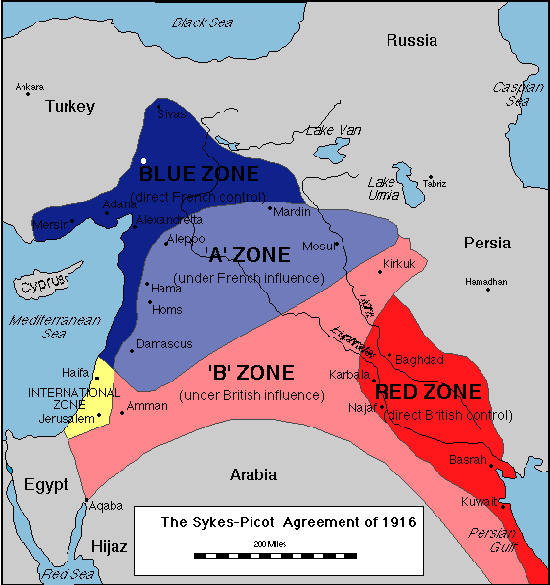
Note "Palestine" did not extend to the Red Sea!
Britain's World War I ally France played no part in the McMahon Correspondence.
Britain was therefore obliged to enter into a separate agreement with France and Tsarist Russia to dispose of the crumbling Ottoman Empire without abandoning McMahon's promises to Hussein.
Those negotiations commenced in November 1915. Britain was represented by a young Conservative MP, Sir Mark Sykes, a cross between Winston Churchill and Lawrence of Arabia. France was represented by Francois Georges Picot, a strong advocate of French claims to Syria.
They divided the Middle East into spheres of influence, with the French zone (light blue) providing a barrier between the British (pink and red) and the Russians (dark blue).
They reached a compromise on Palestine (yellow). Britain was to take the ports of Acre and Haifa, for the Mediterranean Fleet; Britain was also to have a strip of land for a railway line from the coast across to Mesopotamia (now Iraq). The rest of Palestine was to be under international control. The Sykes-Picot Agreement was a secret agreement, hidden especially from the Arabs. But when the Bolsheviks seized power in Petrograd they published all the secret agreements they could find in the Tsarist archives, to the embarrassment of the Allies, especially US President Wilson who had campaigned against secret diplomacy.